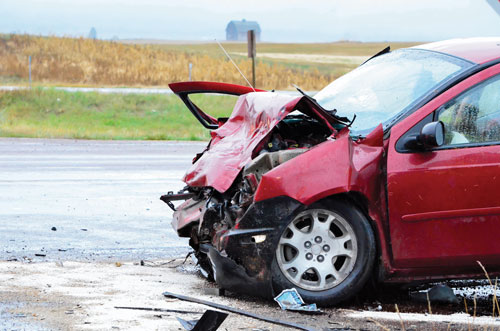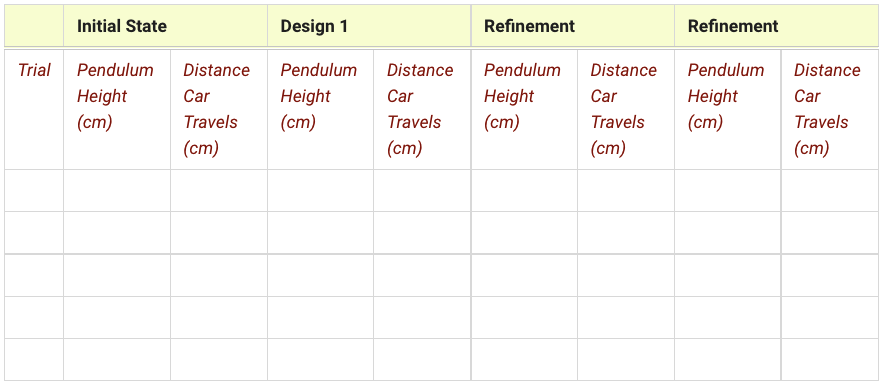9-12 High School
Many students have had the opportunity to participate in an egg drop activity in which they design a container to protect an egg dropped from a designated height. In this activity, students design a car “bumper” to absorb the force of a pendulum colliding with a frictionless cart. Students utilize and apply concepts including force, energy transformation, conservation of energy, momentum, conservation of momentum, and Newton’s laws of motion. A well-designed bumper should absorb the force of the pendulum striking it, resulting in minimum displacement of the car. This activity can also be used as a design challenge after students research automotive safety design and technologies like air bags, crumple zones, and seat belts.
Look at the photograph of this front-end wreck carefully. What would you ask the automotive engineer about the design and construction of this car?

What general characteristics must be engineered to minimize the force on an object during a collision?
PE HS-PS2-3. Apply scientific and engineering ideas to design, evaluate, and refine a device that minimizes the force on a macroscopic object during a collision.
Constructing Explanations and Designing Solutions
PS2.A: Forces and Motion
ETS1.C: Optimizing the Design Solution
Cause and Effect
Students should wear safety glasses and avoid unintended contact with the swinging stopper.
To save set-up time, prepare materials for each table. You may construct the pendulum before the activity then store a permanent class set.
A. Pendulum Construction
B. Initial State Testing
Design a Bumper
Design Evaluation Data

Use the engineering design cycle as a framework, your data, and physics concepts to make a written recommendation for directions to reduce force on the Hall’s cart during a collision.
Student answers will vary but must include all tasks within the design cycle and the evidence to support their revisions.
Use what you have learned through the engineering process as evidence to explain why the car in the phenomenon picture has a crumpled front end but an in-tact driver’s compartment.
Student answers will vary but must include evidence generated during the engineering process applied to the picture of the wrecked car.
*Next Generation Science Standards® is a registered trademark of Achieve. Neither Achieve nor the lead states and partners that developed the Next Generation Science Standards were involved in the production of this product, and do not endorse it.
Carolina is teamed with teachers and continually provides valuable resources–articles, activities, and how-to videos–to help teachers in their classroom.
Get the latest news, free activities, teacher tips, product info, and more delivered to your inbox.